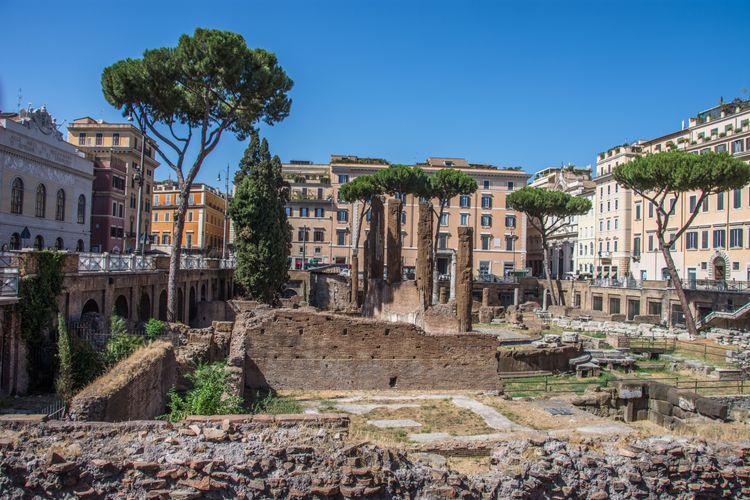That was, until renovations of the site were finalised and visitors were allowed to explore the site, as of late June 2023. What’s so fascinating about this place is that it is believed to be where Roman dictator Julius Caesar was assassinated on March 15th 44 B.C. On that fateful day when Caesar went to a Senate meeting, he was unaware that a group of conspirators had plotted to kill him, and he was met with the group stabbing him 23 times at the Curia of Pompey, launching the end of the Roman Republic and ushering in its time as the Roman Empire under the first Emperor, Octavian, who was Caesar’s adopted son and subsequently became known as Augustus upon assuming the role of Emperor in 27 B.C. This particular event has fascinated humans for centuries and was famously embellished by William Shakespeare in his play Julius Caesar (1599) when he portrayed a dying Caesar exclaiming “Et tu, Brute?” as the dictator realised his close friend and protégé Brutus was amongst the conspirators.
In the middle of a major intersection at the heart of Rome stands an imposing archeological site, complete with ruined temples, greenery, and a general sense that something important once stood here, but now, an aura of mystery has taken hold of the space. Out of reach to visitors and locals, the area became a cat sanctuary, with the only intrusions to the area’s peaceful disposition stemming from the sounds of passing cars or tourists taking pictures perched above the site.

Sacred Area of Largo di Torre Argentina in Rome, Italy. In this area, in March 44 BC Julius Caesar was stabbed to death.
- © Pier Giorgio Carloni / ShutterstockThe dramatic and bloody episode of Rome’s history occurred at a Senate meeting held at the Curia of Pompey, which is said to be on the very site which has just reopened to visitors, known today as the Sacred Area of Largo di Torre Argentina. The area includes the remains of four Republican age temples that date back anywhere from the fourth to second century B.C. The four temples are particularly captivating witnesses to some of Rome’s most turbulent and dramatic moments and each have their own stories and characteristics to learn from. Within the archaeological complex, behind temples B and C, you’ll be able to spot a rather large tuff which is all that remains of the Curia of Pompey, aka, the place where Julius Caesar was murdered. While you won’t see any markings of a specific spot where the assassination took place, simply being in the vicinity of the event is impressive and a little overwhelming. It’s a little dizzying to realise you can be in the presence of such history, even over two thousand years later.
The site is packed with information, educational material and interactive experiences. Visitors will see much more than the remains of the Curia of Pompey and the four temples, but also ancient sculptures, marble decorations, frescoes and many other unseen fragments of what life was like in Republican Rome. The site was transformed over many centuries and ultimately discovered in 1926 after much demolition and reconstruction in the neighbourhood. Understanding the value of what they had found, local officials at the time decided to close off the site and have it be admired from above to help preserve it. With the help of funding from Italian fashion house Bulgari, the project was able to be successfully completed, and visitors are now allowed on the legendary grounds.
Practical Information
- You can find out more about the site on the city of Rome’s official tourism website.
- Entrance costs 5€. Visitors can purchase tickets online ahead of time on their designated webpage.
- The site is open to visitors from Tuesday to Sunday from 9:30am to 7pm.
Editor’s tip
If you’re curious about knowing more about Ancient Rome’s rather alarming history of murder and assassinations just like that of Julius Caesar, we cannot recommend Emma Southon’s _A Fatal Thing Happened on the Way to the Forum: Murder in Ancient Rome_ (2020) enough. The book gives a gripping account of stories and customs and norms regarding different kinds of murders in Ancient Rome and Southon’s lighthearted style makes for a quick and educational yet highly enjoyable read. The book is the perfect companion to your visit to the Sacred Area of Largo di Torre Argentina.






